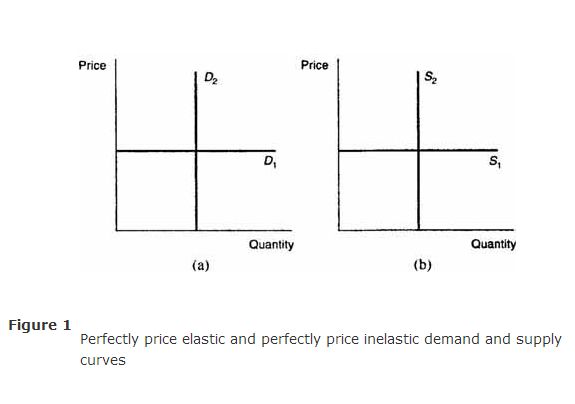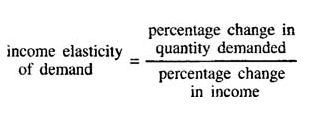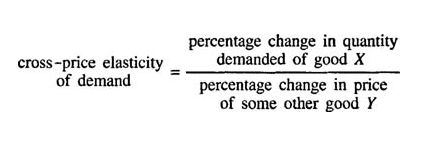In addition to understanding how equilibrium prices and quantities change as demand and supply change, economists are also interested in understanding how demand and supply change in response to changes in prices and incomes. The responsiveness of demand or supply to changes in prices or incomes is measured by the elasticity of demand or supply.
Price elasticity of demand and supply. The price elasticity of demand is given by the formula: The price elasticity of supply is given by a similar formula: ![]()

![]()
The price elasticity of supply is given by a similar formula:

If the percentage change in quantity demanded is greater than the percentage change in price, demand is said to be price elastic, or very responsive to price changes. If the percentage change in quantity demanded is less than the percentage change in price, demand is said to be price inelastic, or not very responsive to price changes. Similarly, supply is price elastic when the percentage change in quantity supplied is greater than the percentage change in price, and supply is price inelastic when the percentage change in quantity supplied is less than the percentage change in price.
The price elasticity of demand or supply will differ among goods. For example, consider a 50 percent increase in the price of two goods—candy bars and prescription medicines. While the demand for both candy bars and prescription medicines should decline in response to the price increases, the percentage change in the quantity demanded of candy bars is likely to be much greater than the percentage change in the quantity demanded of prescription medicines because candy bars are less of a necessity than prescription medicines. You could summarize this finding by stating that the demand for candy bars is more price elastic than the demand for prescription medicines. Alternatively, you might state that the demand for prescription medicines is more price inelastic than the demand for candy bars.
Two extreme cases. There are two cases where the price elasticity of demand or supply can take on extreme values. One is the case of perfectly price elastic demand or supply. Demand is perfectly price elastic if for any percentage decrease in price, no matter how small, the percentage change in quantity demanded is infinitely large—demanders demand all that they can. Supply is perfectly price elastic if for any percentage increase in price, no matter how small, the percentage change in quantity supplied is also infinitely large—suppliers supply all that they can.
The other extreme case occurs when the percentage change in quantity demanded or supplied is always equal to 0, regardless of the percentage change in price. In this case, demand or supply is said to be perfectly price inelastic, or completely nonresponsive to change in prices.
The two extreme cases are illustrated in Figure . The demand curve D 1 in Figure (a) illustrates the case of perfectly price elastic demand, while the supply curve S 1 in Figure (b) illustrates the case of perfectly price elastic supply. The demand curve D 2 in Figure (a) illustrates the case of perfectly price inelastic demand, and the supply curve S 2 in Figure (b) illustrates the case of perfectly price inelastic supply.

Income elasticity of demand. The income elasticity of demand is given by the formula:

If the percentage change in the quantity demanded is greater than the percentage change in income, then demand is said to be income elastic, or very responsive to changes in demanders' incomes. If the percentage change in the quantity demanded is less than the percentage change in income, then demand is said to be income inelastic, or not very responsive to changes in demanders' incomes. Notice from the definition of income elasticity that if the income elasticity of demand is positive, the good must be a normal good, and if the income elasticity of demand is negative, the good must be an inferior good.
Cross‐price elasticity of demand. The cross‐price elasticity of demand is the ratio of the percentage change in the quantity demanded of some good X to a percentage change in the price of some other good Y. The cross‐price elasticity of demand is given by the formula: ![]()


If the percentage change in the quantity demanded of good X is greater than the percentage change in the price of good Y, the demand for good X is cross‐price elastic with respect to good Y, or very responsive to changes in the price of good Y. If the percentage change in the quantity demanded of good X is less than the percentage change in the price of good Y, the demand for good X, is cross‐price inelastic with respect to good Y, or not very responsive to changes in the price of good Y. From the definition of cross‐price elasticity, one may also conclude that if the cross‐price elasticity of demand is positive, the goods X and Y must be substitutes, and if the cross‐price elasticity of demand is negative, the goods X and Y must be complements.